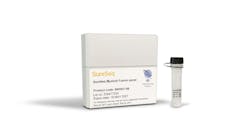Today’s healthcare landscape is highly complex. As we continue to make strides in patient care, diagnostics play an increasingly important role in ensuring that patients with health conditions are identified, treated, and cured when possible. Medical guidelines, including testing guidelines, play an important role in this process. However, when these guidelines are ill-conceived, instead of helping patients, they may put them in harm’s way.
One such example is cervical cancer. The medical community has made great strides in fighting this disease. Cervical cancer was once the leading cause of cancer death in women in the United States, but in recent years mortality rates have been cut in half. To a large extent, these improvements are directly tied to laboratory-based screening.
Current guidelines—and a proposed change
Current United States Preventative Services Task Force (USPSTF) guidelines recommend screening for cervical cancer in women age 21 to 65 years with cytology (Pap smear). For women age 30 to 65 years, recommendations are either Pap every three years or co-testing (Pap and human papillomavirus [HPV] testing) every five years (preferred). This combination, often called co-testing, both identifies cellular changes affecting the cervix potentially caused by cancer (Pap test) and the presence of the virus that causes it. Nearly every medical organization committed to women’s health supports co-testing.
In September 2017, the USPSTF recommended changing these guidelines to eliminate co-testing. Under the newly proposed guidelines, women between 30 and 65 years could still be screened by Pap tests every three years or be screened by high-risk HPV (hrHPV) tests every five years. (Women ages 21 to 29 would only be offered Pap screening every three years.)
Many stakeholders are concerned that this revision to the current guidelines will put women’s lives at risk.
Making the case against the change
The Task Force makes several arguments to support the premise that co-testing should no longer be recommended, but these are based on inconsistently applied assumptions and a failure to consider the results of important recent studies.
For example, the Task Force argues that HPV is often a transient infection, even when it does cause cancer. But this argument fails to take into account the fact that a woman may be hrHPV negative by the time cervical cancer has occurred. In fact, studies show that 10 percent or more of women with cervical cancer will test as HPV-negative. In one published study, 18.5 percent of women with significant cervical disease were not identified with hrHPV testing.1 These women would be missed by hrHPV, and many may progress to invasive cervical cancer.
Also, the Task Force based its recommendations on studies involving European and Canadian women.2 It can be convincingly argued that recommendations should be based on studies of American women, who comprise a more diverse population.
Consider that extreme gaps in care already exist for African and Hispanic women relative to non-Hispanic Caucasian women in the United States. According to the American Cancer Society, one in 130 African American women are at risk of developing cervical cancer in their lifetime. Hispanic women have a 1 in 176 lifetime risk; the risk is 1 in 506 for non-Hispanic white women.3 To a great extent, these women are already at heightened risk because they may not be screened adequately.
Some women are known to progress from significant precancerous disease (CIN2 or CIN3) to invasive cervical cancer within five years. The USPSTF looked at “average” disease progression and not the variability of disease progression. It is as if a police officer looked at the average speed of motorists and not the speeders. Screening guidelines must be designed to catch the speeders.
The Task Force also considered data from conventional Pap tests, not the liquid-based cytology that is commonly used in U.S. laboratories today. The appropriateness of adopting guideline changes for a certain population without considering evidence based on that population using current standard-of-care testing can be validly questioned.
It is also worth pointing out that presently there is no U.S. Food and Drug Administration (FDA)-cleared or -approved hrHPV test available for which the FDA granted its approval based on clinical evidence of efficacy at a five-year interval. One hrHPV test has been approved by the FDA as a primary screen, but it received approval based on evidence from a study that evaluated women only at a baseline and three years later.
Demographic and clinical contexts
The USPSTF guidelines are also somewhat cavalier about the risks of cervical cancer to individual women. The Task Force argues that, without screening, a woman’s lifetime risk of cervical cancer is 1.9 percent and lifetime mortality is 0.83 percent. In small populations, low percentages may seem insignificant. But consider that in the U.S. there are roughly 157 million women (2010 U.S. census). If hrHPV alone were to miss 10 percent of women with cervical cancer, then 298,300 women with cervical cancer would be potentially undiagnosed and, statistically, 130,310 would potentially die.
Patients and their physicians depend on the expertise that is employed to develop guidelines such as the ones that USPSTF is recommending. However, when guidelines are recognized by the medical community as flawed and therefore confusing, challenging, and dangerous to integrate into practice—as for the reasons given above—they are of dubious value and often are ignored. Guidelines should reflect factors that are important to patients and their physicians.
Such factors may be acceptable risks and costs, rates of follow-up, and individual risk factors. The USPSTF-proposed recommendations recognized these factors, but then ignored them in its model. While there are some shortcomings associated with co-testing, if clinical research and real-world evidence suggest that co-testing works, it is hard to understand why the USPSTF would choose to eliminate it from cervical cancer screening guidelines.
I urge the USPSTF to continue to recommend co-testing in women 30 to 65 years of age and physicians to continue using it. Eliminating co-testing from guidelines could reduce access, which is dangerous to women and will erase the progress that has been made in reducing the impact of cervical cancer. Whatever we can do to get more women to their doctor and screened appropriately for cervical cancer will save lives and should be encouraged.
REFERENCES
- Blatt AJ, Kennedy R, Luff RD, Austin RM, Rabin DS. Comparison of cervical cancer screening results among 256,648 women in multiple clinical practices. Cancer Cytopathol. 2015;123(5):282-288
- U.S. Preventive Services Task Force Draft Cervical Cancer Screening Recommendations for Primary Care Pratice: Final Evidence Summary. U.S. Preventive Services Task Force (USPSTF). Rockville, MD: U.S. Dept. of Health & Human Services, Agency for Healthcare Research and Quality.
- American Cancer Society. Cancer Facts & Figures for African Americans 2016-2018. Atlanta: American Cancer Society, 2016.
Harvey W. Kaufman, MD, MBA, FCAP, serves as Senior Medical Director for Quest Diagnostics.





